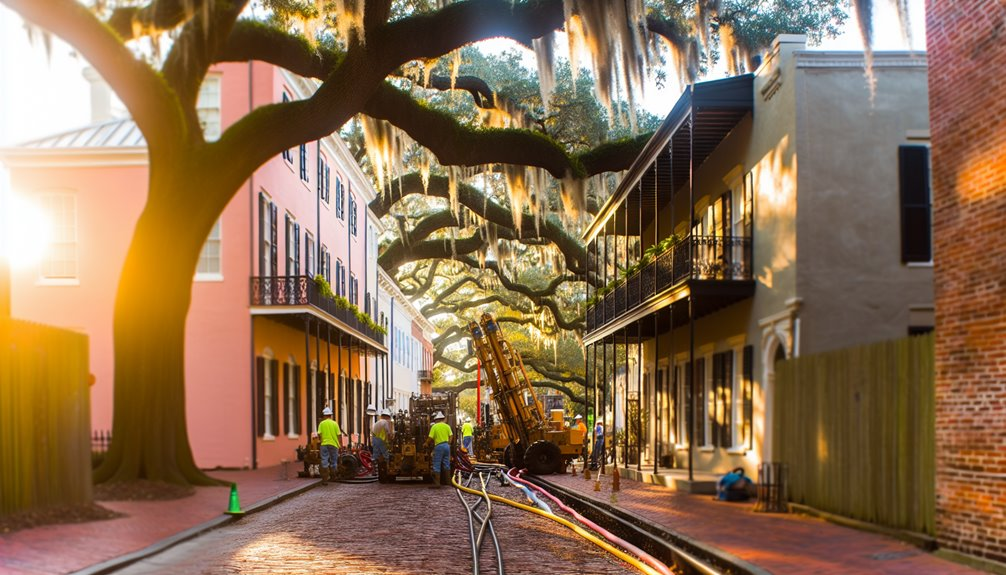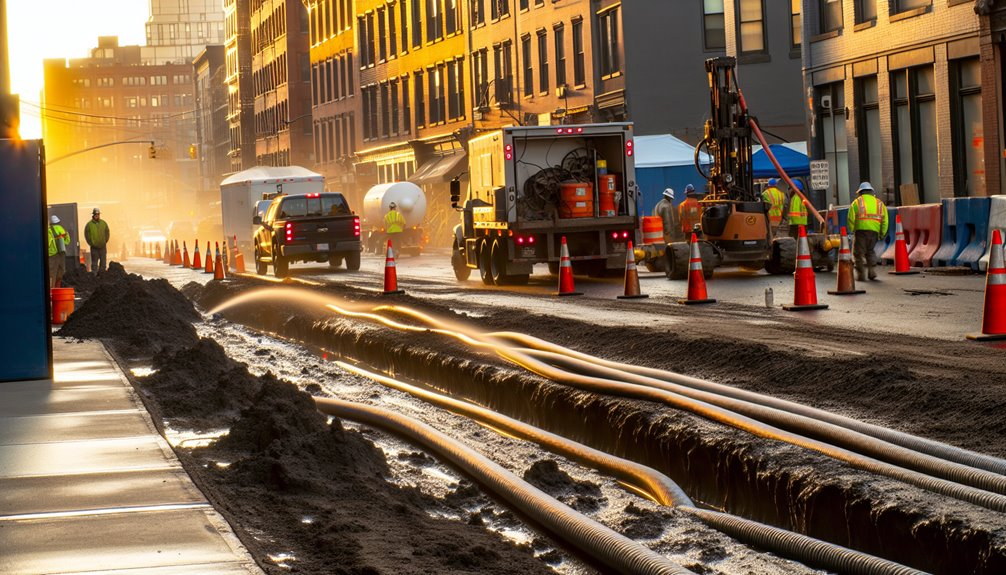You want new utilities without scarring Savannah’s brick, cobbles, and canopy roots. Directional drilling can do it—if you control survey accuracy, annular pressures, fluid returns, and root‑zone clearances. That means preconstruction utility mapping and potholing, engineered bore profiles, gyro/walkover guidance, closed‑loop fluids, and matting that prevents micro‑vibration and point loads. You also need arborist input and archival checks to avoid surprises. The difference between preservation and damage comes down to a few non‑negotiables…
How Directional Drilling Preserves Savannah’s Streetscapes
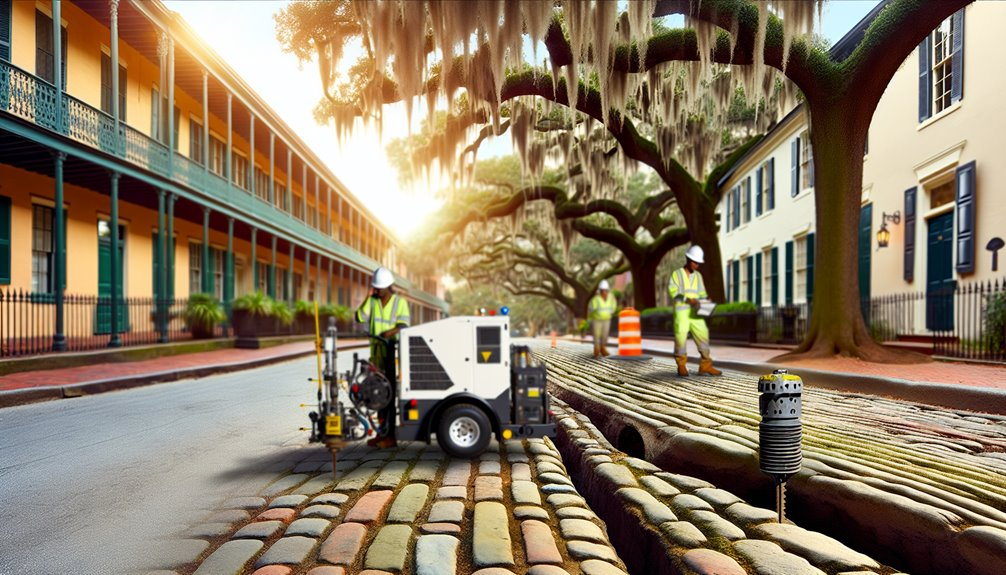
With Savannah’s brick-lined squares and live-oak canopies in mind, directional drilling threads new utilities beneath streetscapes without open-cut scars.
You survey alignments, verify depths, and specify entry/exit points to keep the bore path below pavement, curbs, and brick pavers, protecting historic streetscapes while maintaining traffic and access.
You confirm utility locates, run geotechnical checks, and select drilling fluids with proper viscosity to stabilize soils and prevent frac-out.
You track the head with precise telemetry, adjusting pitch to hold tolerances within inches, then pull back conduit in a single, controlled pass.
You minimize disturbance, document as-builts, and restore only small launch pits, aligning your work with cultural preservation priorities and neighborhood expectations.
The result: concealed infrastructure, intact surfaces, and continuity of place.
Navigating Tree Canopies and Historic Root Systems
Although canopy grandeur defines Savannah, you treat every live oak as critical infrastructure: delineate protected root zones (PRZ) from trunk diameter and canopy dripline, ground-truth with arborist input, and model root plate depth by species and soil series.
You run canopy mapping to align bore paths with branch clearance, swing radii, and equipment staging, preventing crown strikes.
For root preservation, you set entry/exit pits outside PRZs, specify shallow fluid pressures, and use walkover telemetry to maintain minimal cover loss.
You choose steering assemblies with low vibration and pilot at depths that bypass buttress roots yet avoid saturated layers.
Hydro-excavate test holes verify voids and feeder roots.
You document as-built clearances and schedule post-drill arborist inspections to confirm stability and long-term vigor.
Minimizing Disturbance to Brick, Cobblestone, and Tabby Surfaces
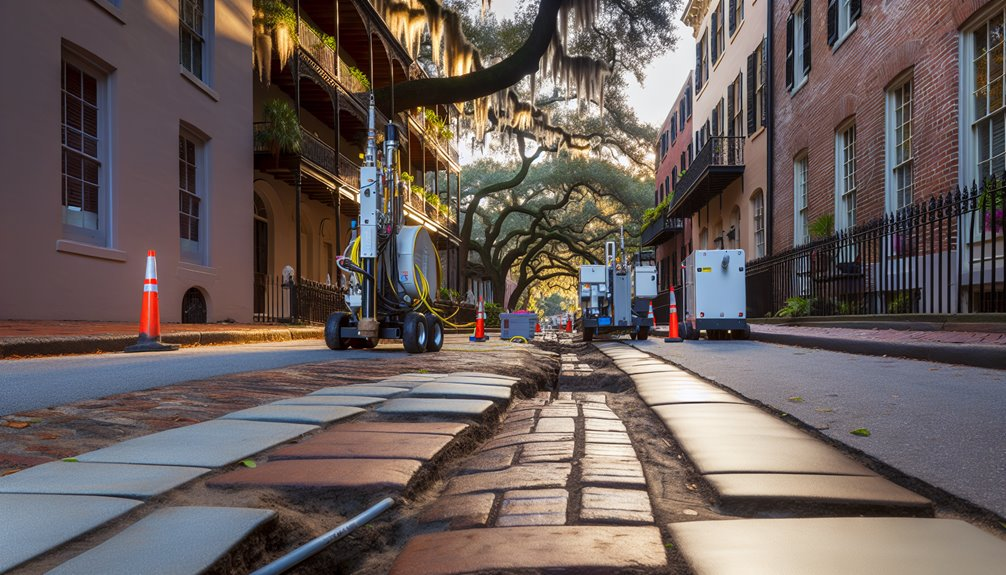
Before you set a drill head, treat Savannah’s brick, cobblestone, and tabby as artifacts, not just pavements. You’ll plan entry and exit pits beyond historic surfaces, then steer beneath using low-torque tooling, gradual bend radii, and precisely modeled depths. Stage mats and shoring deliver gentle surface protection; rubber-tracked rigs and padded outriggers spread loads, preventing point pressure and racking.
Control annular pressure with calibrated mud pumps and real-time returns tracking to avoid heave or grout loss. Use micro vibration monitoring on adjacent facades and pavements; set alarm thresholds, pause, and adjust RPM, thrust, or mud weight when readings rise. Document pre-conditions, photograph courses, and mark paver patterns for exact reinstatement. You’re safeguarding fabric and pride—quietly, accurately, together.
Protecting Archaeological Resources and Unmapped Utilities
Preserving surface fabric isn’t enough; subsurface soils hold artifacts, burial grounds, and undocumented lines that demand equal care.
You start with archival research, ground-penetrating radar, and electromagnetic locators to create a risk map that guides bore paths. Pair utility mapping with potholing at critical crossings to verify depths and materials before you drill. Maintain archaeological oversight on site; a qualified monitor can pause advancement, document finds, and redirect the pilot if cultural material emerges.
Control drilling fluid pressures to prevent frac-outs, especially in loose riverine layers. Use shorter thrust intervals, real‑time annular pressure monitoring, and conservative mud weights. Specify non-conductive trackers near legacy cables, and isolate power for safety. Log coordinates, depths, and soil responses, then update shared as-builts so your team protects Savannah’s story together.
Regulatory Considerations in Savannah’s Historic Districts
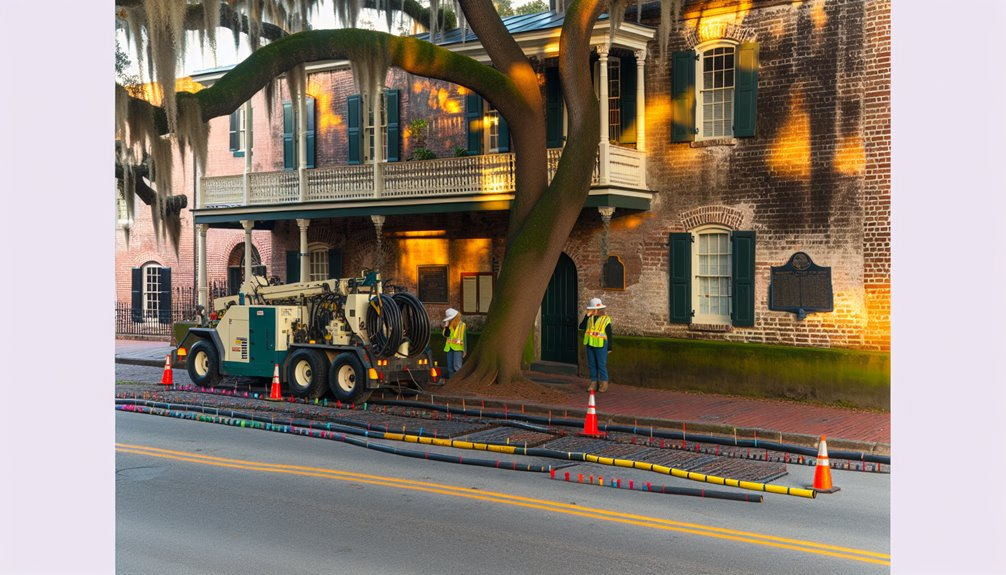
Even as your bore plan solidifies, the Historic District’s layered jurisdictions dictate your next moves. You’ll navigate city right‑of‑way rules, state oversight, and federal triggers tied to historic preservation.
Start permit coordination early with the City of Savannah, MPC preservation staff, and utility owners; align submittals so review clocks run in parallel. Tie your scope to Secretary of the Interior standards where applicable, and document how trenchless methods minimize surface disturbance.
Confirm whether Section 106 applies through funding or federal easements, and secure concurrence before mobilization. Require preconstruction meetings to lock traffic control, vibration limits, allowable work windows, and monitoring protocols.
Maintain as‑built traceability, notification logs, and deviation approvals. When you meet regulators proactively, you protect fabric, schedule, and your standing in Savannah’s preservation community.
Planning and Surveying for Precision Bore Paths
From day one, you anchor the bore path in data: tight survey control, verified utilities, and geotechnical truth.
You begin with geotechnical reconnaissance to map sands, clays, marl lenses, and groundwater, then set entry/exit geometry that respects façade footings and tree root zones.
You close the loop with stakeout coordination, tying control to benchmarks and curb lines so field crews pull the line exactly as designed.
You pre-model bend radii, allowable doglegs, and annular clearance to safeguard brick streets and vaults.
You calibrate locating systems to the survey grid, plan tolerance windows at crossings, and script contingency offsets.
You brief neighbors and trades, align schedules, and lock permits to milestones.
The result: a predictable bore that protects heritage while welcoming progress.
Fluid Management, Spoil Control, and Site Cleanliness

Balancing drilling fluid volumes with formation behavior keeps the bore stable without bleeding into Savannah’s sands, clays, or historic vaults. You’ll calibrate viscosity, gel strength, and return rates to prevent frac-outs near brick-lined drains and root zones. Track annular pressure continuously; adjust pump curves before losses migrate.
Set up spoil containment at entry, exit, and intersect points. Use sealed tanks and lined berms so cuttings never touch cobbles or tree wells. Enforce a closed-loop system: separate solids, recycle clean fluid, and schedule compliant fluid disposal with manifests.
Stage spill kits, silt socks, and vacuum trailers within reach. Power-wash only into containment, not gutters. Before demob, sweep stones, rinse pavers, and restore joint sand. Document volumes, chain-of-custody, and site photos so neighbors see you cared.
Case Scenarios: Utility Upgrades With Zero Curb Appeal Loss
Dial in a trenchless plan that threads upgrades under live oaks, brick walks, and utility corridors without leaving a trace. You map utilities with multi-frequency locators, then steer a pilot at controlled depths to miss root zones and historic footings. Silent excavation occurs from compact entry pits screened by fencing; drill fluid is contained with berms and vac systems to prevent staining.
Replace galvanized services on a Federal-style block while protecting stoops: stage along alleys, pull HDPE through a pre-reamed path, and backfill with flowable fill to stop settlement. For facade preservation, route fiber beneath cornice lines and vaults, using tight bend-radius hardware inside basements. Cross a brick square by night, monitor annular pressure, and exit within a planter bed, restoring pavers on datum-logged patterns.
Choosing Qualified HDD Contractors and What to Ask
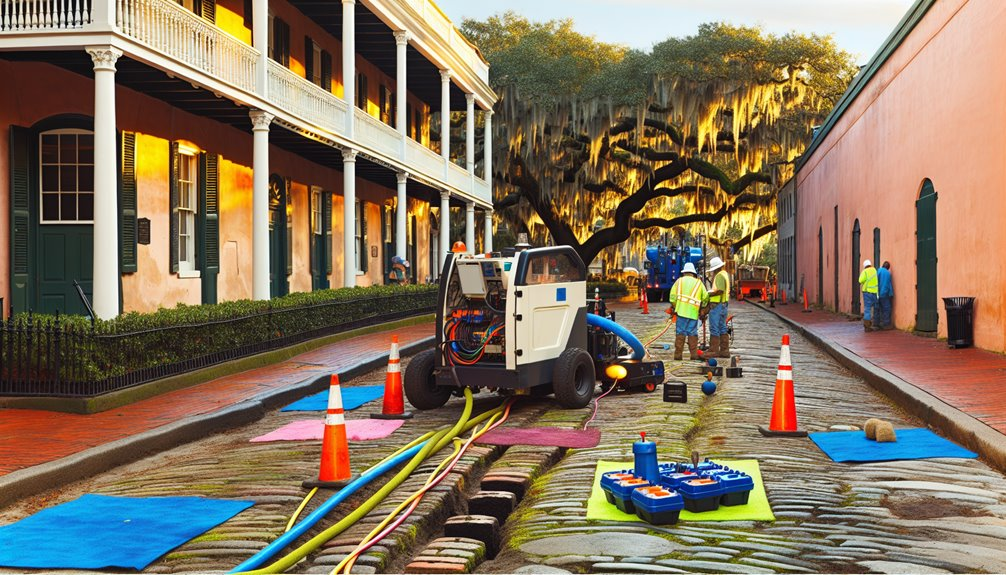
Before you award a bid, vet horizontal directional drilling firms for Savannah’s constraints: historic fabric, live oak root zones, high groundwater, and mixed utilities. Prioritize contractor vetting that proves experience under COA requirements, tree protection ordinances, and utility coordination in brick and tabby streets. Ask for recent Savannah references, strike-free records, and vacuum excavation for potholing. Require a geotech plan, frac-out response, and mud management compliant with stormwater rules.
During bid comparison, insist on engineered bore profiles, walkover/gyro guidance methods, and wireline interference mitigation. Verify ASCE 38 utility mapping, ground-penetrating radar use, and arborist-reviewed root avoidance. Confirm drill rig footprint, matting, and containment to protect sidewalks and squares. Demand daily restoration protocols, photo documentation, and a single point of contact for residents and merchants.
Conclusion
As the owner of Boring Bros., I’m proud that our approach lets you upgrade buried utilities without scarring Savannah’s streetscapes — we combine engineered bore design with rigorous controls to get the job done right. We always start with preconstruction utility mapping, arborist-reviewed root avoidance, and gyro/walkover guidance to hold tight tolerances. We use micro-vibration monitoring, closed-loop fluids, spoil containment, and documented restoration methods that respect brick, cobble, and tabby, and we follow archaeological protocols and permitting specific to historic districts. We carefully vet HDD contractors for QA/QC, pressure management, and as‑built accuracy so your curb appeal stays intact while you get reliable, future‑proof infrastructure. If you’d like to learn more, please visit boringbro.com or give us a call at (954) 639-6167 — I’d love to talk about how we can help protect Savannah’s old‑world charm.

